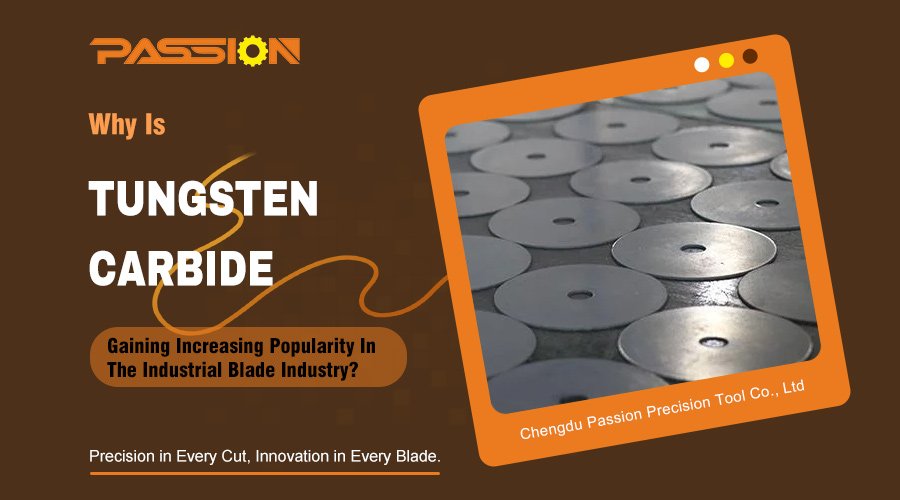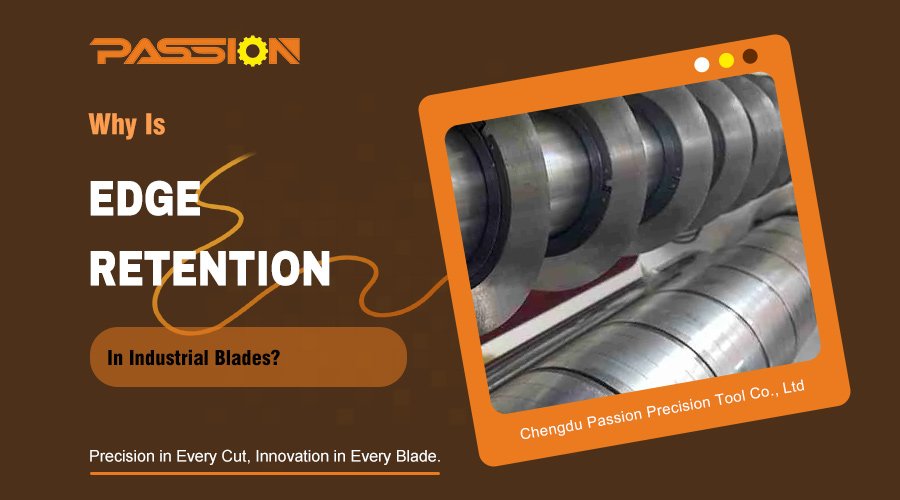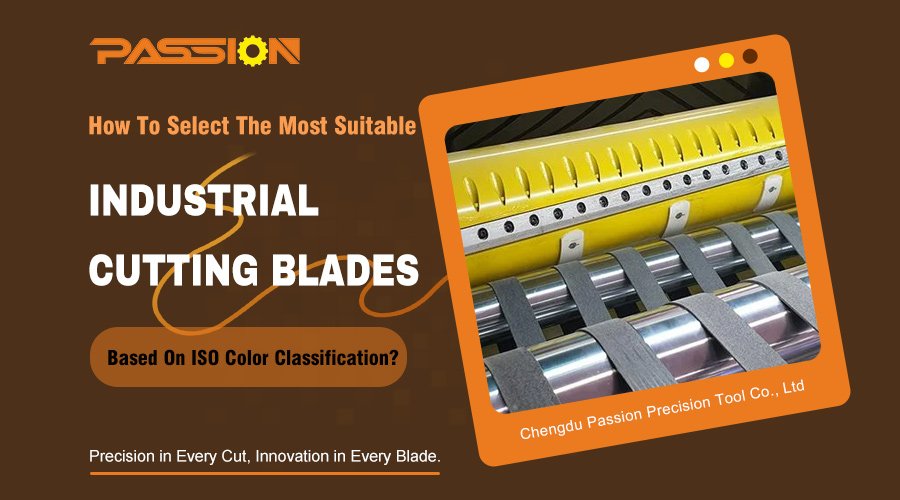In the corrugated board manufacturing and packaging industry, the cutting process is one of the key factors in determining product quality and productivity. Whether it’s large-volume slitting or cut-to-length, the design and cutting principle of the knife directly affects the flatness of the kerf, the stability of the equipment and the service life of the knife.
In practice, Guillotine blades are often designed with a beveled edge at an angle, rather than a completely straight edge. This “beveled cutting” is not a coincidence, but a combination of material properties, force distribution and cutting dynamics. In this article, we will analyze the principles and functions of the angled guillotine blade design in the corrugated industry from a variety of perspectives. Covering the following aspects:
- Beveled cutting principle: reduces instantaneous shear resistance
- Reduced cutting vibration and improved section quality
- Extended knife life and avoidance of localized wear and tear
- Mechanism design to match the sliding shear movement
- Adaptation to the cutting characteristics of different materials
This article will analyze and introduce this five parts to reveal the engineering logic and practical value behind this design.

Beveled Cutting Principle: Reducing Instantaneous Shear Resistance
During the cutting process, the knife needs to overcome the shear strength of the material. When the cutter is pressed at a right angle to the material, the entire blade is in contact with the material at the same time, which creates instantaneous high shear resistance in a very short period of time. For corrugated cardboard, which is a complex, layered material, this forced break is likely to cause the following problems:
- Excessive instantaneous load: The equipment drive system needs to withstand extremely high impact forces, which can easily cause mechanical vibration or even damage.
- High energy consumption: The motor power demand increases, and long-term operation consumes more energy.
- Strong sense of tearing of the cut: As the material is pressed off as a whole under high pressure, the cut is often accompanied by burrs and indentations.
To solve these problems, engineers have adopted the principle of Shear Angle Cutting. The core idea is:
- When the cutting edge is at an angle, the contact between the cutting edge and the material is no longer a “one-time overall pressure cut”, but a progressive shearing process.
- The knife mouth from a point gradually extends to the entire edge, cutting load is dispersed, instantaneous resistance is significantly reduced.
- This cutting process is similar to the action of “scissors” rather than “axe splitting”.
The practical effect:
- Less driving force is required for the knife and the machine runs more quickly.
- Cutting stresses are released sequentially along the cutting edge, avoiding concentrated bursts of energy.
- The material breaks more smoothly, reducing damage to the corrugated structure.
Beveled cutting is not only mechanically advantageous, but also lays the foundation for subsequent cutting stability and chip quality. Next, we further explore the significance of this design from the perspective of vibration control.
Reducing Cutting Vibration And Improving Section Quality
The problem of vibration is common in the corrugated cutting process. Excessive instantaneous force on the knife can lead to the following:
- Mechanical resonance: High-frequency vibrations occur in the moving parts of the equipment, increasing noise and reducing precision.
- Cutting irregularities: Burrs, cracks or indentations appear on the section, affecting cardboard stacking and subsequent processes.
- Knife offset: Under high-frequency vibration, the knife may be slightly displaced, resulting in reduced cutting accuracy.
With the bevel design, the cutting process becomes a progressive force:
- Due to the gradual expansion of the cutting contact area, the impact force on the knife is effectively dispersed.
- The instantaneous peak load is reduced and the vibration amplitude is drastically reduced.
- The machine runs more smoothly, ensuring a straight and neat cutting line.
The improvement in section quality is reflected in the following:
- Smooth cutting: paper fibers are cut layer by layer rather than being crushed as a whole.
- The corrugated structure remains intact: there are fewer collapses or flattenings, which is especially important for high-strength corrugated board.
- Subsequent processes are facilitated: the neatness of the cut is improved, facilitating automated gluing, folding and packaging.
Reduced cutting vibration not only improves the appearance of the product, but also indirectly extends the life of the knife and equipment. In the next section, we will discuss the relationship between knife durability and bevel design.
Extend Knife Life And Avoid Localized Wear And Tear

The life of a knife is a key indicator of its economy. In the traditional right-angle cutting method, the knife edge is often subjected to great friction and pressure in localized areas, resulting in:
- Excessive localized wear of the cutting edge, resulting in chipping or curling.
- Knives require frequent resharpening or replacement, increasing downtime costs.
- Uneven wear further exacerbates cut quality problems.
With the beveled design, the characteristics of knife wear change significantly:
- Uniform distribution of forces: Cutting is carried out point by point, with all parts of the cutting edge taking turns to participate in the force, avoiding “localized overload”.
- More balanced wear: The overall life of the cutting edge is extended, and the resharpening cycle is lengthened.
- Reduced temperature rise at the cutting edge: Instantaneous friction is reduced, and the temperature rise at the surface of the knife is small, which reduces the chipping of the cutting edge due to thermal fatigue.
From the point of view of economic benefits:
- The service life of individual knives is extended, which significantly reduces the frequency of knife replacement.
- Downtime for maintenance is reduced, and the entire production line has a higher start-up rate.
- The overall cost of knife purchasing and maintenance is reduced, and the efficiency of the company is increased.
Extended tool life enables companies to run their equipment more consistently in actual production. However, the knife design is not alone, it also needs to work with the equipment’s motion mechanism.

Mechanism Design To Match Sliding Shear Motion
When designing corrugated cutting equipment, the movement of the knife is often combined with the shape of the blade. The most representative of these is the Sliding Shear Motion (SSM).
- In this mechanism, the knife produces a small lateral slide while pressing down.
- The beveling of the cutting edge is adapted to this movement, creating a scissor-like “sliding cut” effect.
Advantages include:
- Reduced resistance: The sliding motion gradually pulls the material fibers apart, further reducing resistance.
- Sharper cuts: The sliding motion avoids the fiber extrusion associated with pure compression cutting.
- High energy utilization: Power consumption is more balanced, reducing ineffective energy consumption.
For example, in a high-speed corrugated cross cutter with a straight cutting edge and no beveling, the sliding cutting effect cannot be achieved, and instead, strong impacts will occur, resulting in shorter equipment life. A Guillotine blade with a beveled edge, on the other hand, is optimally matched to the mechanism, resulting in a smooth and efficient cutting process.
In addition to matching the mechanism, the beveled blade must also be adapted to a wide range of material characteristics in order to truly meet the needs of the corrugated industry.
Adapting To The Cutting Characteristics Of Different Materials
The corrugated industry does not cut a single board, but a wide range of types and layers:
- Single, double and triple corrugated boards.
- High strength kraftliner.
- Top and linerboards of different thicknesses and grammages.
The cutting characteristics of these materials differ significantly:
- Thin board: easily collapsed, requires gentle and gradual cutting.
- Thick board: strong structure, high shear strength, need to disperse cutting stress.
- Multi-ply laminated boards: complex inter-ply bonding, prone to delamination or burrs during cutting.
The beveled Guillotine blade provides greater adaptability:
- In the case of thin boards: progressive shearing avoids excessive compression and the cut remains flat.
- In the case of thick boards: the force is spread out to reduce the impact on the machine and the cutting process is smoother.
- In the case of laminated boards: beveled cuts help break each layer in turn, reducing delamination and burrs.
This adaptability eliminates the need to change knives frequently for different materials, significantly improving production flexibility and efficiency.
In summary, the use of the Guillotine blade in the corrugated industry is not the result of a single factor, but rather the result of a systematic engineering process that combines the mechanics of the material, the structure of the machine, and the needs of the production. The main effects are:
- Lower instantaneous shear resistance, reducing energy consumption and equipment shock.
- Reduce cutting vibration, improve section flatness and cutting accuracy.
- Extend the life of the knife, reduce maintenance and replacement costs.
- With the sliding shear movement, realize efficient and smooth cutting process.
- Adapts to diverse material characteristics, enhancing the flexibility of the production line.
In the future of corrugated cardboard processing, as the cardboard structure and packaging needs continue to escalate, the beveled design of the Guillotine blade will continue to play an irreplaceable role. It is not only a reflection of the wisdom of knife design, but also an important guarantee for improving the overall efficiency and product quality of the industry.






